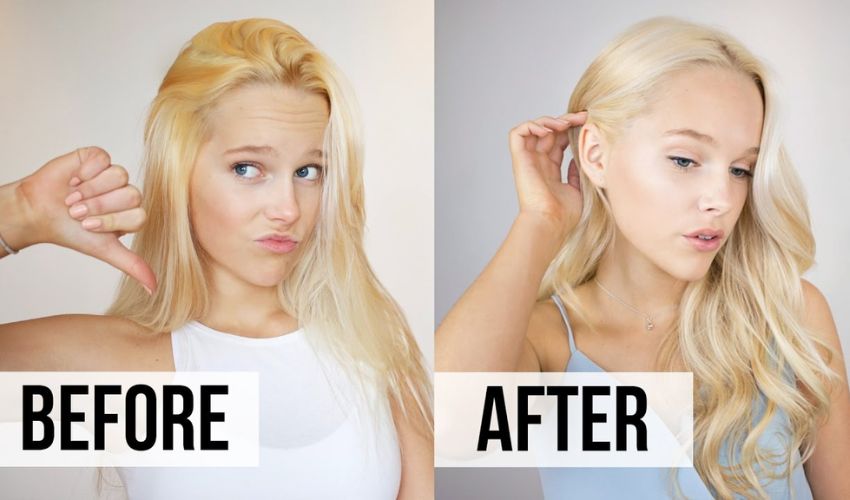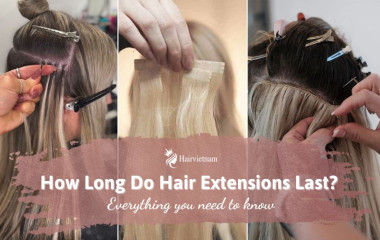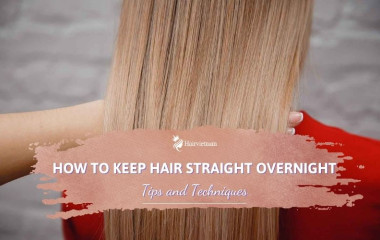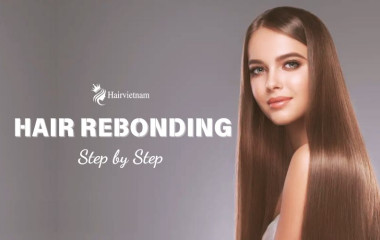How to Fix Uneven Bleached Hair: Restore Balance and Beauty
Bleaching your hair can be a transformative experience, but when it results in uneven color, it can be frustrating. Uneven bleached hair can make your overall appearance appear unbalanced and affect your self-confidence. How to fix uneven bleached hair?
In this article, we will explore various remedies and techniques to help you address and fix uneven bleached hair, bringing back a seamless and stunning look. Whether you prefer DIY solutions or professional assistance, we've got you covered. So let's dive in and find the perfect remedy for your uneven hair color.
What is Uneven Bleached Hair?
Uneven bleached hair can be a source of frustration and concern for those who have undergone the bleaching process. Several factors can contribute to this issue, including uneven application of bleach, varying hair porosity, or inadequate processing time.

What is Uneven Bleached Hair?
The result is often a patchy and inconsistent hair color that may appear blotchy or streaky. Besides the obvious visual discrepancy, individuals with uneven bleached hair may experience a decline in their overall appearance and self-confidence.
The inconsistent tones and uneven distribution of color can make it challenging to style and maintain a cohesive look. Addressing these concerns and seeking professional advice can help restore both the desired hair color and the individual's confidence.
>> Learn More: How To Fix Damaged Hair: Effective Tips for Hair Repair
Precautions before Fixing Unevenly Bleached Hair

Precautions before Fixing Unevenly Bleached Hair
Assessing Unevenness: Identifying Problem Areas
Examine your hair: Take a close look at your hair to determine the areas that are unevenly bleached. Identify patches or sections that are lighter or darker than desired.
Note the color variations: Observe the tones and shades present in the uneven areas. Pay attention to any brassy or yellow tones that need to be corrected.
Evaluate the texture: Assess the texture of your hair in the uneven areas. Determine if certain sections feel rough, dry, or damaged compared to others.
Gathering necessary tools and products
Hair color correction products: Depending on the specific issues with your hair, you may need products such as toners, color correctors, or hair dyes to even out the color.
Deep conditioning treatments: Uneven bleaching can cause damage, so gather deep conditioning masks or treatments to restore moisture and improve the overall condition of your hair.
Hair care tools: Ensure you have essential tools like a wide-tooth comb, hair clips, gloves, and applicator brushes for applying products evenly.
Conducting a strand test to determine compatibility
Select a small section of hair: Choose a discreet section of hair, preferably from an uneven area, to perform the strand test.
Follow the instructions: Read the instructions on the hair color or corrective product you're using and follow them carefully. Mix the product as directed.
Apply the product: Apply the product to the strand of hair, making sure to cover it thoroughly. Leave it on for the recommended time.
Rinse and evaluate: Rinse the strand of hair and assess the results. Check if the color correction is effective and if the product causes any adverse reactions or unwanted changes.
Check compatibility: If the strand test yields satisfactory results and there are no negative reactions, the product is likely compatible with your hair. If not, consider seeking professional advice or trying a different product.
>> Learn More: Discover Different Types of Weave Hair for Your Style
How to Fix Uneven Bleached Hair
When it comes to fixing uneven bleached hair, it's important to approach the process with care and consideration. Uneven bleaching can occur when certain sections of the hair receive more bleach than others, resulting in an inconsistent color or tone. However, with the right techniques and products, you can address this issue and achieve a more balanced and cohesive look.

How to Fix Uneven Bleached Hair
Assess the unevenness: Identify the areas where the bleaching is uneven and determine the extent of the problem.
Deep conditioning treatment: Start by nourishing your hair with a deep conditioning treatment. Choose a product specifically designed for damaged hair and leave it on for the recommended time to restore moisture and strength.
Toning: If the unevenness is caused by brassy or yellow tones, use a toner to correct the color. Select a toner shade that is opposite to the undesired tone to neutralize it. For example, use a purple toner to counteract yellow tones.
Spot correction: For specific areas with significant unevenness, consider spot correction. Apply a bleach mixture or a color correcting product only to those areas that need adjustment, following the instructions carefully. Take extra caution to prevent overlapping with previously bleached hair.
Seek professional help: If the unevenness is severe or you're unsure about correcting it yourself, it's best to consult a professional hairstylist. They can assess the situation and provide appropriate solutions, such as color correction techniques or additional treatments.
Regular maintenance: After correcting the unevenness, maintain your hair's health and color by using color-safe and nourishing hair care products. Minimize heat styling and protect your hair from excessive sun exposure to prevent further damage.
Remember, fixing uneven bleached hair may take time and multiple treatments. Patience and proper care are essential for achieving the desired results while keeping your hair healthy.
Caring for and Maintaining Fixed Hair Color

Caring for and Maintaining Fixed Hair Color
Post-treatment hair care routine to minimize damage
After fixing your hair color, it's important to follow a post-treatment hair care routine to minimize damage and maintain the vibrancy of your new color. Start by gently shampooing your hair with a color-safe shampoo, which is specifically formulated to preserve color and prevent fading. Follow with HairVietnam Color Protect Conditioner to nourish and hydrate your hair while locking in the color. Additionally, consider using Heat Protectant Spray before heat styling to minimize damage and protect your color-treated hair from thermal stress.
Using color-safe shampoos and conditioners
To prolong the life of your fixed hair color, it's essential to use color-safe shampoos and conditioners. HairVietnam offers a range of color-safe hair care products that are specially designed to protect and enhance color-treated hair. Their Color Lock Shampoo and Conditioner are formulated with gentle cleansing agents and color-locking technology to maintain the vibrancy and shine of your fixed hair color. Regular use of these products will help prevent color fading and keep your hair looking vibrant and healthy.
Regular deep conditioning treatments to restore moisture
Color-treated hair can become dry and prone to damage, so regular deep conditioning treatments are essential to restore moisture and maintain the overall health of your hair. Deep Moisture Mask is a nourishing treatment that replenishes moisture, repairs damage, and enhances the longevity of your fixed hair color. Apply the mask to damp hair, focusing on the mid-lengths to ends, and leave it on for the recommended time. Rinse thoroughly to reveal softer, more hydrated hair. Incorporating this deep conditioning treatment into your hair care routine will help keep your fixed hair color looking vibrant and ensure that your hair remains healthy and manageable.
Preventing Future Uneven Bleaching

Preventing Future Uneven Bleaching
Professional hair bleaching vs. DIY at-home methods
When it comes to preventing future uneven bleaching, opting for professional hair bleaching services is often a safer and more reliable choice compared to DIY at-home methods.
Importance of proper application techniques and timing
To achieve even and consistent bleaching results, proper application techniques and timing are crucial. Using high-quality products, but it's equally important to follow the instructions and guidelines provided. This includes applying the bleach evenly and avoiding overlapping on previously bleached sections. Additionally, timing plays a significant role. Leaving the bleach on for too long can lead to excessive damage and uneven color results, while removing it too early can result in under-processed sections.
Conclusion
In conclusion, fixing uneven bleached hair requires a combination of patience, proper techniques, and the use of appropriate hair care products. By following the steps outlined above, including assessing the unevenness, deep conditioning, toning, spot correction, seeking professional help if needed, and maintaining regular care, you can work towards achieving a more even and harmonious hair color. Remember to be gentle with your hair throughout the process and prioritize its health and well-being. With time and dedication, you can successfully restore balance to your bleached hair, ultimately enjoying a beautiful and uniform result.





_cr_380x240.jpg)













